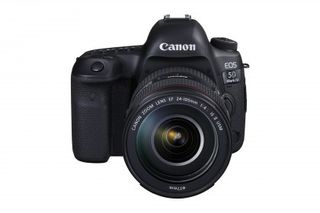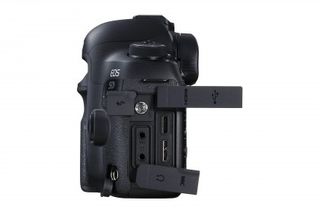Canon EOS 5D Mark IV vs 5D Mark III: 21 key differences
How do these two full-frame DSLRs compare?
11. Touch control
Once again a feature that began life in more junior models but has since found its way up to the recent flagship EOS-1D X Mark II, touchscreen functionality has finally come to the EOS 5D camp. This feature provides control over the menus, focus-point selection and image review among other things.
12. New metering sensor

Just as the EOS 5D Mark III sported a similar 63-zone iFCL metering sensor to the one inside the EOS 7D, the new EOS 5D Mark IV gains a 150K RGB+IR sensor that mirrors the one inside the recent EOS 7D Mark II (as well as the 5DS and 5DSR).
This uses 252 zones for analysis, and is not only said to provide more accurate exposure than before, but also better focus tracking and subject detection. It even sports its own dedicated DIGIC 6 processor.
13. New silent modes
The EOS 5D Mark III provided users with the option of silent shooting in both single and continuous shooting modes, and this has been fleshed out for the new model. There are now three options: silent high, silent low and silent single, which Canon states are useful when capturing breaking news or animals in their natural habitat.
14. HDR movie mode
The EOS 5D Mark IV becomes the first EOS 5D model to offer an HDR movie mode, something which we first saw in the EOS 760D.
15. Wi-Fi and NFC

The EOS 5D Mark III didn't sport Wi-Fi although the new model has this built in alongside NFC technology. This means the camera can be controlled remotely from a smartphone or tablet and have images sent cable free to a wealth of other devices.
The camera works in conjunction with the same Canon Camera Connect app that we've seen previously, which is available for both iOS and Android platforms.
Get daily insight, inspiration and deals in your inbox
Get the hottest deals available in your inbox plus news, reviews, opinion, analysis and more from the TechRadar team.
16. GPS
The new model is also equipped with a GPS system, something missed out of the EOS 5D Mark III but since included elsewhere (such as in the full-frame EOS 6D). This records longitude, latitude, elevation and Coordinated Universal Time (UTC), and together with the camera's "enhanced" weather sealing, is said to make it more adept to travel and photojournalism than was the case with previous models.
17. IPTC metadata
The EOS 5D Mark III can record metadata that conforms to the IPTC (International Press and Tele Communication) standard. This allows for a broader range of information about an image to be stored as part of its metadata than usual, such as description of the people or other subjects within it.
18. Size and weight

The differences aren't too significant here, but the new model is actually a touch smaller and lighter than the EOS 5D Mark III. It measures 150.7 x 116.4 x 75.9mm (next to the EOS 5D Mark III's 152 x 116.4 x 76.4mm) and weighs 890g – 60g less than before.
19. Digital Lens Optimizer
Canon's Digital Lens Optimizer mode, which seeks to correct effects such as diffraction and softness caused by the low-pass filter, can now be used for JPEGs as they're captured, something which was not possible before. Previously you could only apply this to Raw files.
20. Anti-Flicker technology
This option is designed to help capture the shot at just the right moment under artificial lighting sources so that exposure and white balance are not affected by any flickering. It first surfaced in the EOS 7D Mark II, and so was missed out of the older 5D Mark III.
21. USB 3.0 port

The decision to leave out a USB 3.0 port from the EOS 5D Mark II and opt for a USB 2.0 one puzzled some, although Canon has opted for the former type for the new model for much faster data transfer.
Most Popular

